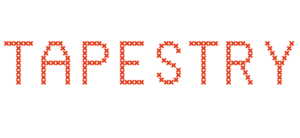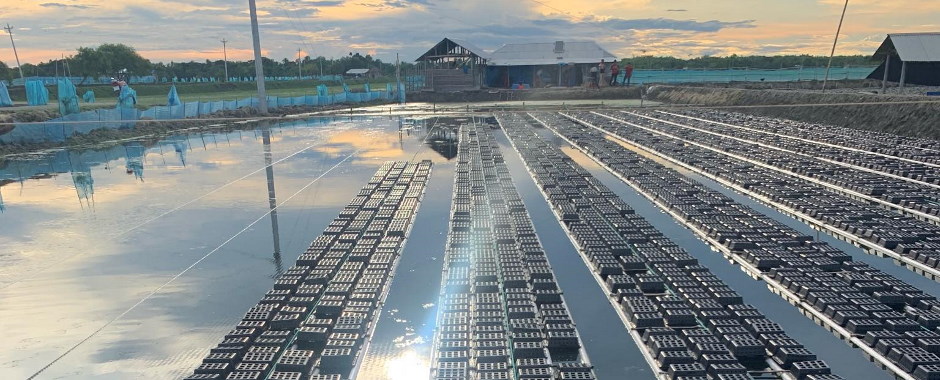The TAPESTRY research project is exploring how transformations may occur ‘from below’ in marginal environments with high levels of uncertainty. In this blog post, Shababa Haque and Mahmuda Mity, part of the research team in Bangladesh, share this story of people living on the ‘front line’ of drastic environmental changes in the Sundarbans.
In the Satkhira district of Bangladesh, on the northern fringes of the Sundarbans delta, there is a village called Burigoalini. As dawn breaks over the village, with the call for Fajr prayers, Buli Rani starts her day. She begins by completing all her household chores, following which she rushes to her job as a day labourer. Once there she works from 7 am to 1 pm, earning herself a half-day wage of Tk. 150 (£1.35 GBP). After this, she returns home and her full focus goes towards working on her own kakra gher (crab farm).
In 2015, Buli Rani’s husband Poritosh had a massive stroke, which left him physically unfit to work. At the age of 46, Buli Rani had no choice but to take on the full responsibility of providing for her household, where she lives with her husband, her 11-year-old son and her mother-in-law. Back in the day, Poritosh and Buli Rani would both work as day labourers and earn a fair share of money. Since Poritosh fell ill, and with one person’s wage not enough to raise a family, Buli Rani decided to utilise the skills she gained from working as a day labourer in the local crab farms to start their own business. She used a loan from the Gonomukhi foundation to set her family’s very own kakra gher. According to her, crab farming is profitable and relatively safe in their salinity-prone area.
Since then, Buli Rani and her family work in their own farm and sell their produce to the local market. She continues to work as a day labourer for at least half of the day to earn some extra income. Buli Rani can successfully provide for her family and also cover the education of her 11-year-old son. She took out two additional loans, which she has successfully paid off with her own income, to get her two elder daughters married.
Buli Rani says she feels like she now has a say in her family affairs. She and Poritosh make their decisions together. Her day is long and it is always filled with things she needs to get done, but for her, this is not something to complain about. This is the only life she knows, and being busy with tasks is far better than having no work at all.
Cyclones and soil salinity: seeking livelihood alternatives
Buli Rani is one of many women earning their livelihood from the ever-expanding crab farming industry covering most of Shyamnagar. These areas previously relied on agriculture for their livelihood, but as salinity levels continued to increase, growing rice, vegetation and freshwater aquaculture became more difficult. Many community members have had their agriculture farms affected following cyclone Aila in 2009. Following the cyclone, the soil became more saline, and intolerant of its usual crops. Many farmers lost their livelihoods, especially those most marginalised.
The area went through a major transition. As salinity restricted the usual livelihood options, saline tolerant crops and fisheries had to be explored. Brackish water aquaculture became a popular option for the area. Hectares of shrimp-cultivating farms spread across the saline land and this allowed people in the area to once again be employed. Those with their own land started their own shrimp farms, while many others were employed as day labourers in the large commercial shrimp farms that were emerging in the area.
However, things quickly changed as shrimp farming began to go downhill. The shrimp cultivation was done mainly in saline water, and as the number of shrimp farms continued to grow, so did the salinity. At a certain point the water became too saline for shrimp to survive. The shrimps started getting attacked by viruses, which led to rapid loss in the market and proved shrimp cultivation to be a rather precarious livelihood choice.
As many small-scale shrimp farms failed, the area was once again in turmoil. More saline-tolerant options had to be explored. This led to the farming of mud crabs in the area. Situated in the south-west edge of Bangladesh, the people of Burigoalini have always had access to the many estuaries and tidal rivers running through the Sundarbans. These rivers are abundant with mud crabs.
At ‘Kakra Point’ (the local term for the densely packed crab-farming area) Gita and her sister wake up at 5 in the morning and make their way to the Sundarbans to collect small crablings. They sell these crablings to the crab-fattening farms so they can be cultivated until they are mature enough for selling in the market.
As crab farms have multiplied, more people have shifted their livelihood towards crab-farming activities. Most of the community’s women are engaged in numerous commercial crab farms, cultivating both hard- and soft-shelled crabs. These crabs are mainly cultivated for export purposes; feeding the appetite of countries such as Japan, China, Singapore and Hong Kong.
Understanding pathways to sustainability from ‘bottom-up’ perspectives
Stories such as these from the Sundarbans demonstrate how the knowledge of local people on the ‘front line’ in so-called climate change ‘hotspots’ offer important perspectives for the development of effective regional adaptation strategies. Initial studies, carried out by researchers in the TAPESTRY project, from India, Bangladesh, Japan, Norway and the UK, have found that people in so-called ‘marginal’ areas are developing sophisticated ways to respond to climate-related events, such as sea-level rise and extreme weather, as well as other uncertainties related to economic and social threats, such as rapid industrial development and the loss or enclosure of mangroves.
The TAPESTRY project works in three cases in Mumbai, Kutch and the Sundarbans – described as ‘patches’ of transformation. Researchers are comparing the situation in the Bangladesh Sundarbans with the Indian Sundarbans to understand how various socio-economic and political economy factors play a role in determining how vulnerable communities face and respond to uncertainties. At present, there is no doubt that crab farming has been extremely profitable for some people in the Shayamnagar sub-district of Bangladesh, and has provided livelihood opportunities for many of the poorest members of the community. However, further research is required to better understand the sustainability of this industry and its impacts on the local ecosystem. For instance, the area is at risk of increasing salinity and more frequent and enhanced natural disasters. As people become more reliant on collecting crabs to survive, the region’s delicate ecosystem also could be put at risk. These issues suggest that the crab farmlands could be extremely vulnerable.
Crab farming, much like other livelihood options in the Sundarbans, is volatile and dependent on changing environmental conditions, which may be further exacerbated by climate change. Some burning questions still remain: how sustainable is crab farming for the people and the region in the long run? If not, what happens if this too fails and the soil has become too saline for almost any food to grow? What then are the alternative livelihoods to resort to? What is the next plan of action? The TAPESTRY project aims to understand how, in the face of such uncertainties, the livelihood opportunities undertaken by local people who depend on the Sundarbans continually shift to take new shape.

This blog post draws on a visit undertaken as part of TAPESTRY, a new transdisciplinary project which explores how transformation may arise ‘from below’ in marginal environments with high levels of uncertainty.
 Uncertainties can make it hard to plan ahead. But recognising them can help to reveal new questions and choices. What kinds of uncertainty are there, why do they matter for sustainability, and what ideas, approaches and methods can help us to respond to them?
Uncertainties can make it hard to plan ahead. But recognising them can help to reveal new questions and choices. What kinds of uncertainty are there, why do they matter for sustainability, and what ideas, approaches and methods can help us to respond to them?
Find out more about our theme for 2019 on our Uncertainty theme page.
